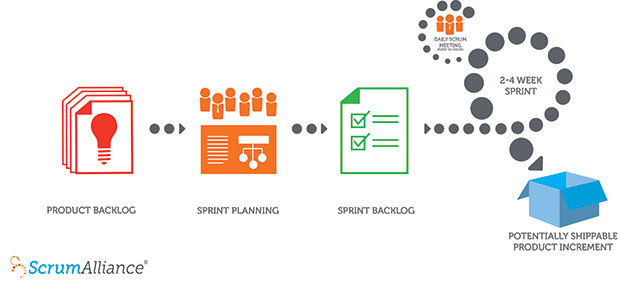It is actually a long time I have not written an educational article on Scrum.
I have recently found some notes from a conversation I had with a community of Scrum Masters few months ago and decided to package them into a blog post. Hope you appreciate it.
So here are three small and easy to observe signs that you need to fix your Daily Scrum.
1. People are only interested in their own tasks.
I found that this
behavior is also pretty encouraged by the common way of running the Daily
Scrum, i.e. the famous three questions. I found many times that people normally
follow with attention until it is their turn to speak; they simply disconnect
after that.
When I see this, I
normally propose the team to try a different way of handling the stand-up.
One way that works is
to keep the same 3 questions, but have 3 rounds instead of one, with each person answering only one question at a time.
This usually gives two benefits.
The first of course is to keep people actively engaged until the end, since they know they will have to speak again.
But there’s a more important one. It serves better the real purpose of the Daily Scrum of collectively assessing where the team is compared to the Sprint goal and collaboratively deciding what the next most important task is for each team member to complete, in order to move closer to the Sprint goal.
This usually gives two benefits.
The first of course is to keep people actively engaged until the end, since they know they will have to speak again.
But there’s a more important one. It serves better the real purpose of the Daily Scrum of collectively assessing where the team is compared to the Sprint goal and collaboratively deciding what the next most important task is for each team member to complete, in order to move closer to the Sprint goal.
Another way (which brings
even more benefits in my experience) is to run the stand-up not focusing on
people’s tasks, but on User Stories.
The idea is that the team takes one User Story at a time from the top and discuss about how to make it “done done” as soon as possible. Then you take the next and move on, either until you covered all the opened stories or until the 15-minutes time is up. In that way team members do not focus on the individual tasks, but more directly look at the Sprint goal as a collective goal to achieve. Sometimes you do not manage to talk about lower priority stories, so people who are working on those feel a bit excluded J. That provides some social pressure to contribute to complete the highest priority stories first, instead of minding their own tasks.
The idea is that the team takes one User Story at a time from the top and discuss about how to make it “done done” as soon as possible. Then you take the next and move on, either until you covered all the opened stories or until the 15-minutes time is up. In that way team members do not focus on the individual tasks, but more directly look at the Sprint goal as a collective goal to achieve. Sometimes you do not manage to talk about lower priority stories, so people who are working on those feel a bit excluded J. That provides some social pressure to contribute to complete the highest priority stories first, instead of minding their own tasks.
2. Everybody is looking
at the Scrum Master instead of at each other
Sometimes it feels
more like a status report. So I use the trick to encourage them to stay in
circle, closer to the task board, and I take (or ask the Scrum Master to take)
a step back, pretending I’m taking notes. I avoid looking at them in the eyes,
so that they feel a bit uncomfortable and they are forced to find other eyes to
look into: their team mate’s eyes. It works immediately most times.
I use the same trick
also when they tend to look at their manager attending the Daily Scrum: I
encourage them to stay in circle, leaving all other attendees outside.
3. People tend to
have long discussions, trying to fix problems during the stand-up
I know that many
Scrum Masters tend to interrupt discussions or ask people to continue
discussion outside the meeting. This works some times, but many times I found
that a bit irritating. I try to use and teach a different approach.
I normally try to
explain at the beginning very clearly to the team that the Daily Scrum is
intended for the Daily Planning, so that everybody understands and buy into this .
So, when I see that a discussion is going on, I leave room for a couple of
minute. If it is not concluded yet, I ask a question like: How do you think
this can affect today’s planning? Most times people admit that it is not
strictly relevant and propose to park it.
On top of that, in
order to have the team really self-organize, because it is everyone’s
responsibility to keep the time of the Daily Scrum, I always use a timer (a
digital one or a “pomodoro”) to visualize the time passing and signal when it
is up, so that the Scrum Master does not act as the bad time-keeper guy.
Of course the three above and other dysfunctions might
be just a symptom of something deeper. If the techniques illustrated above do not work, it can be a smell of something more important that must be addressed.
What are the dysfunctions in your Daily Scrum?


No comments:
Post a Comment